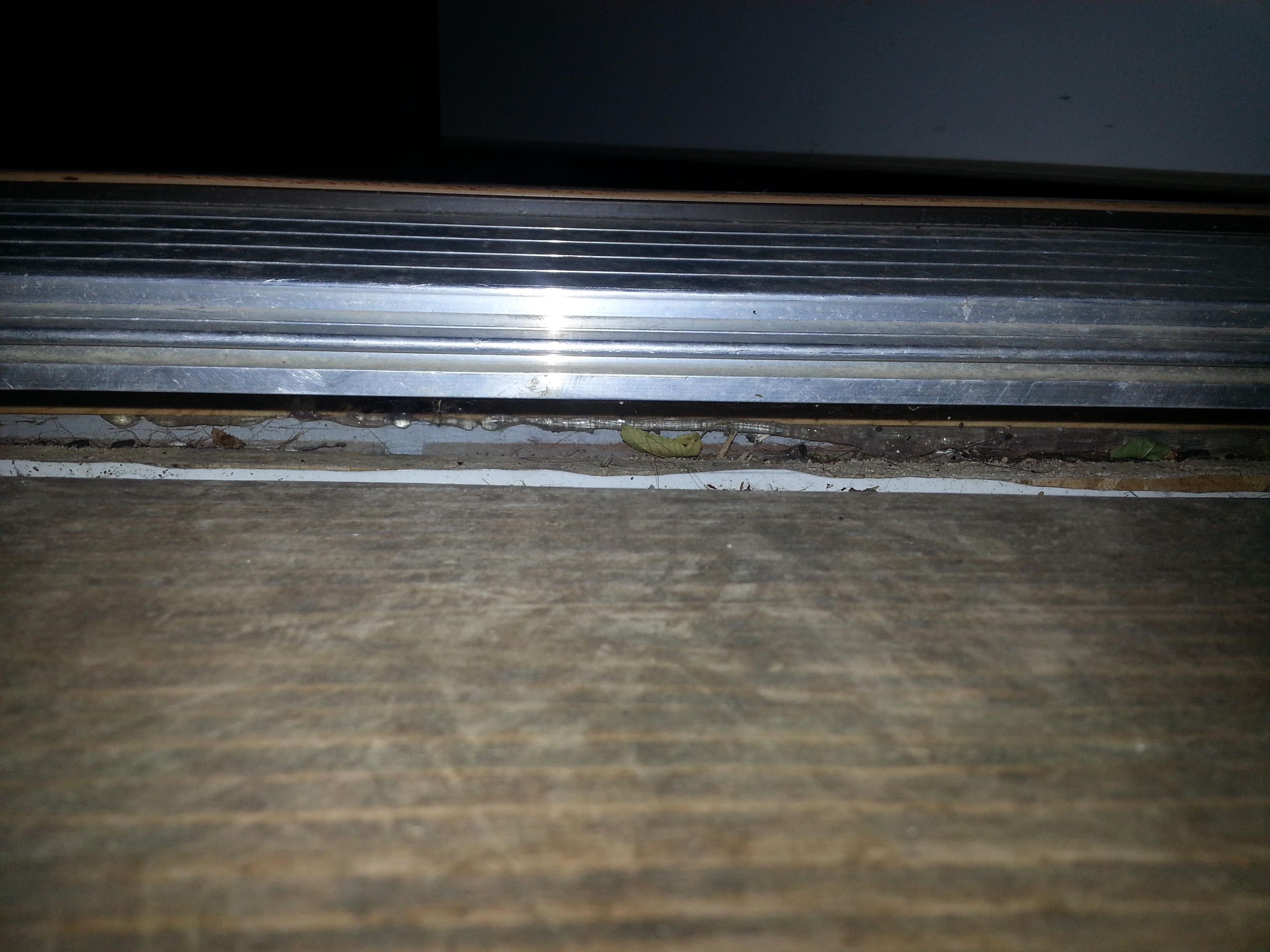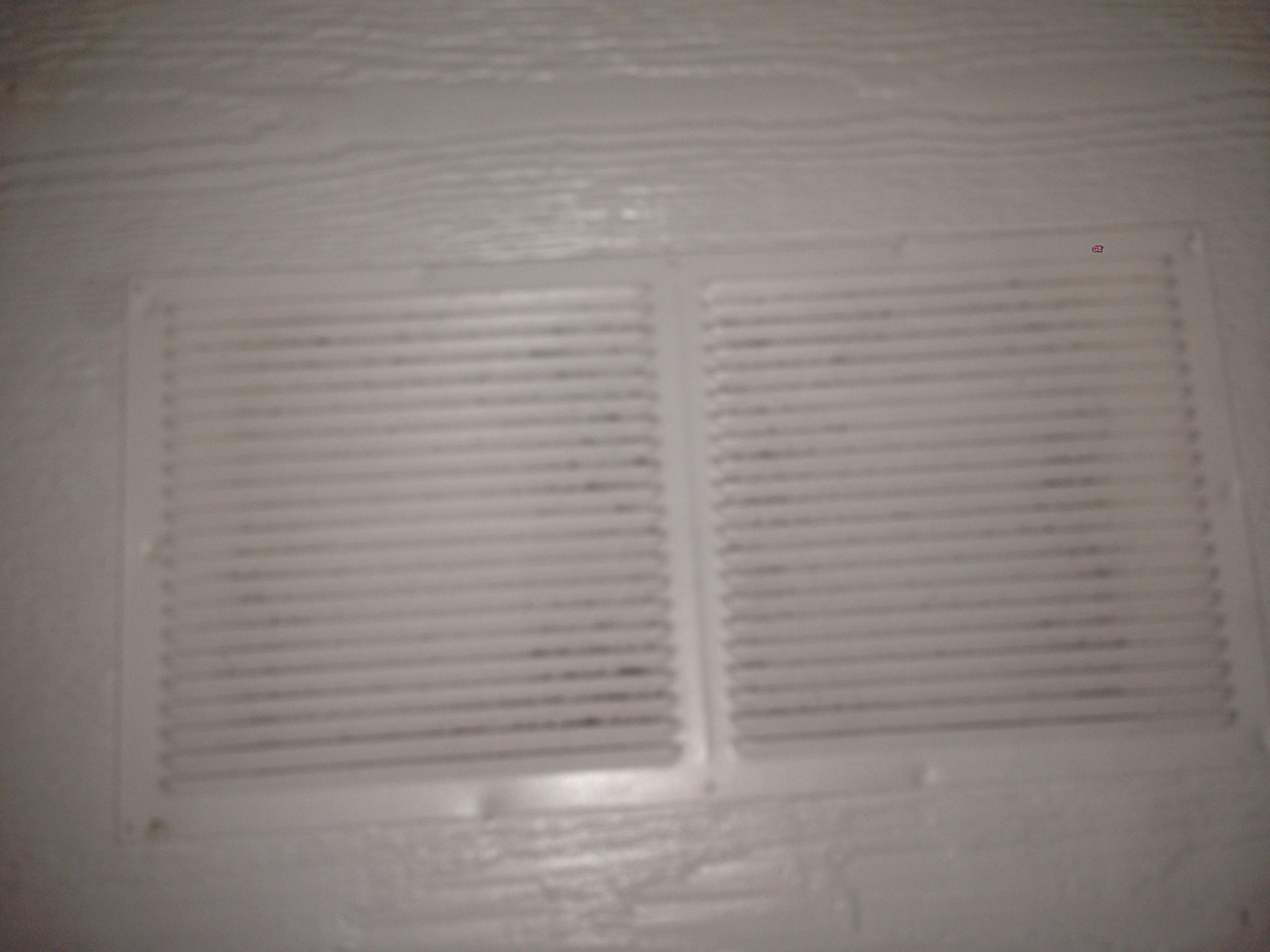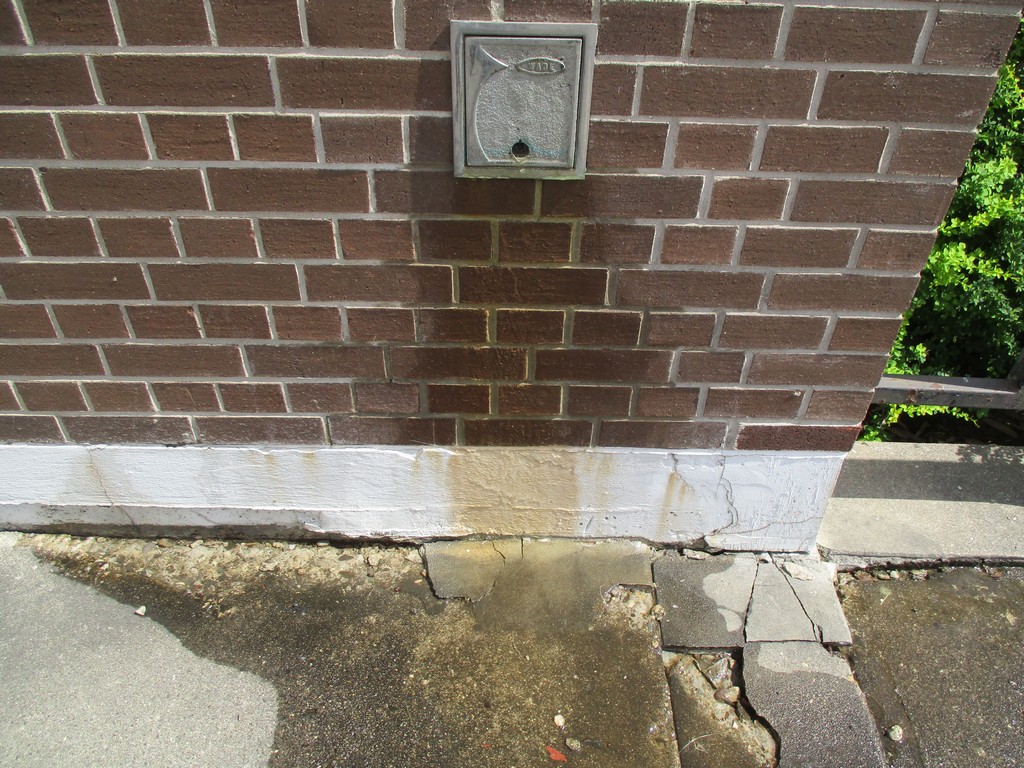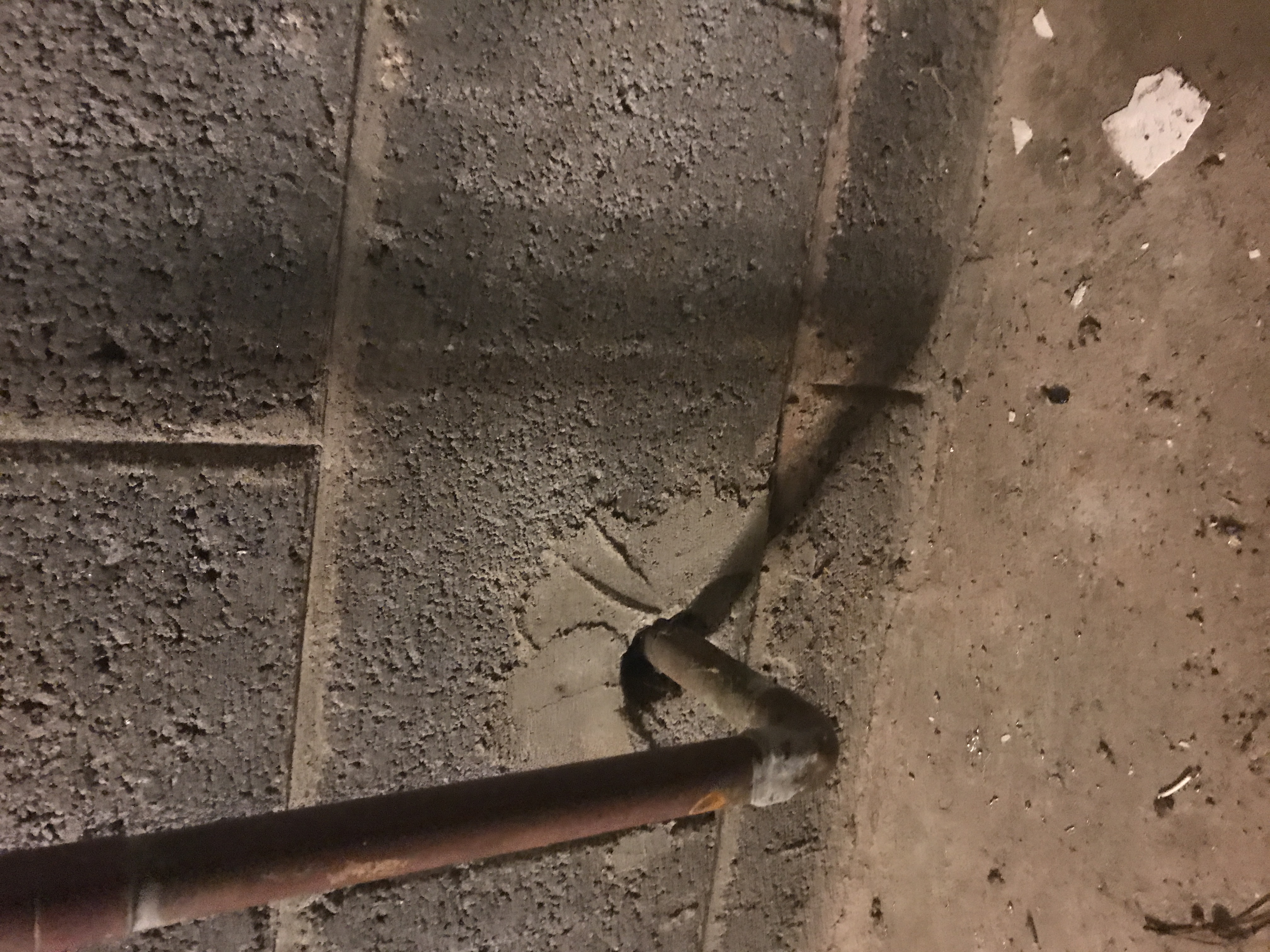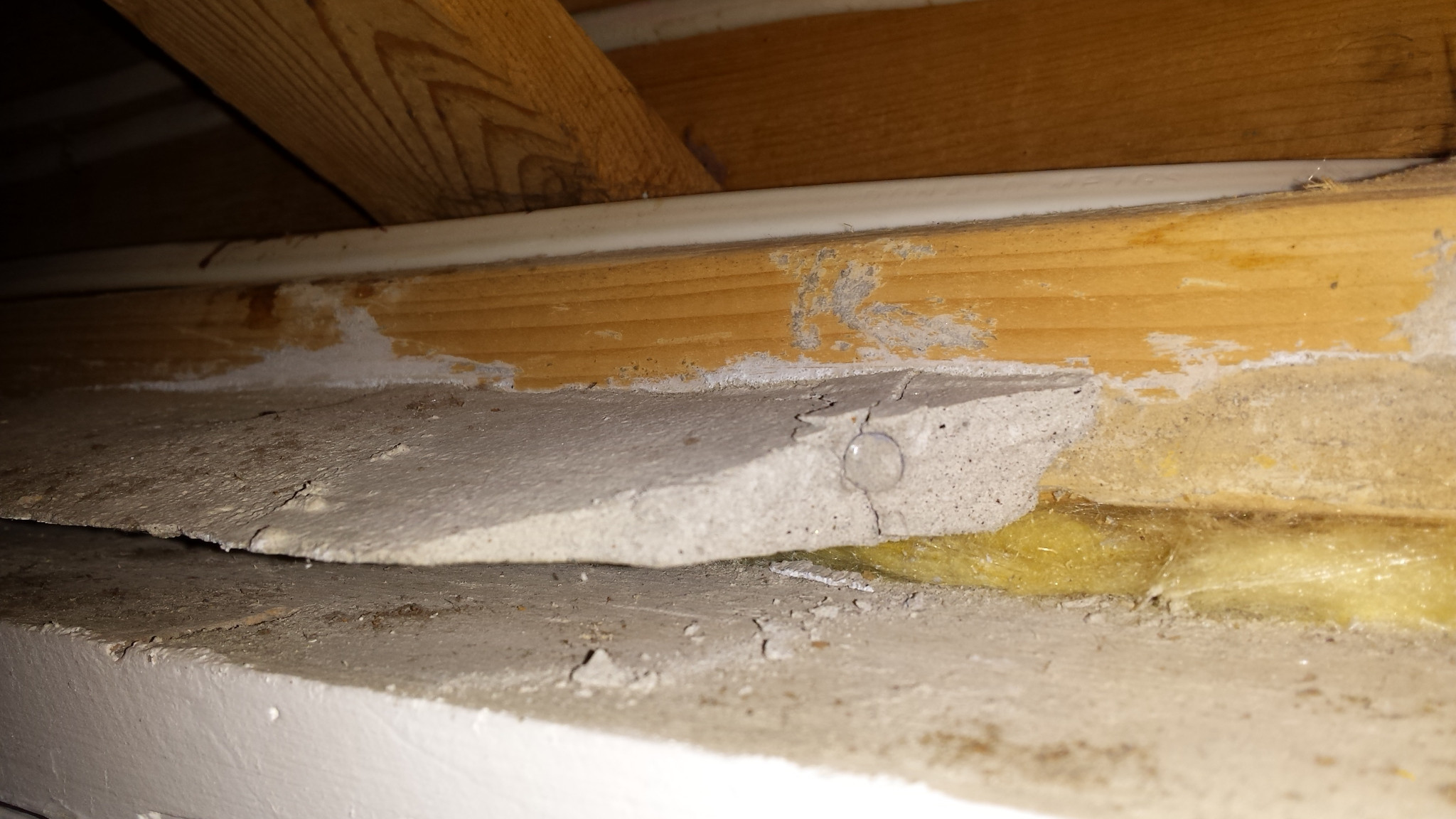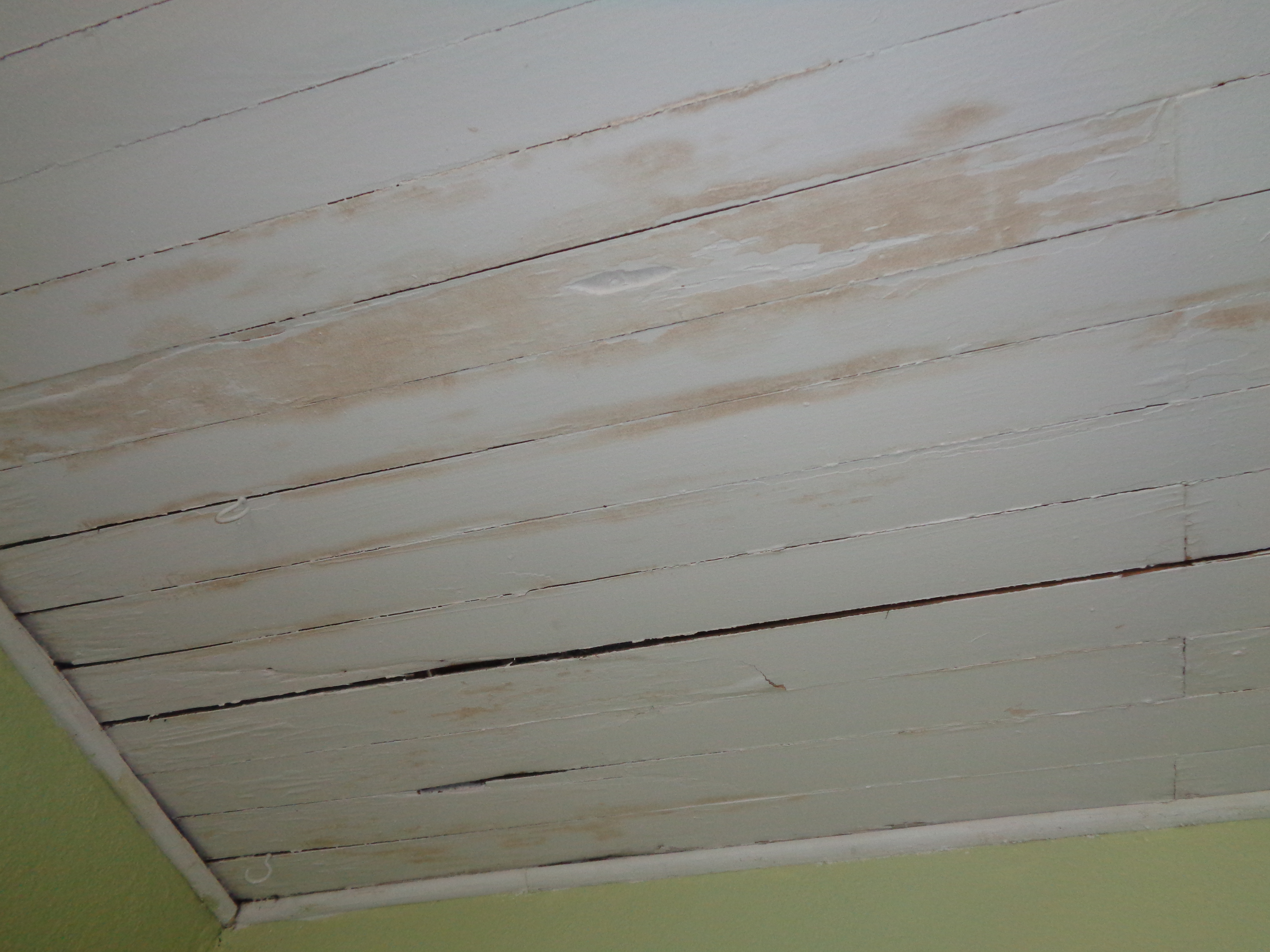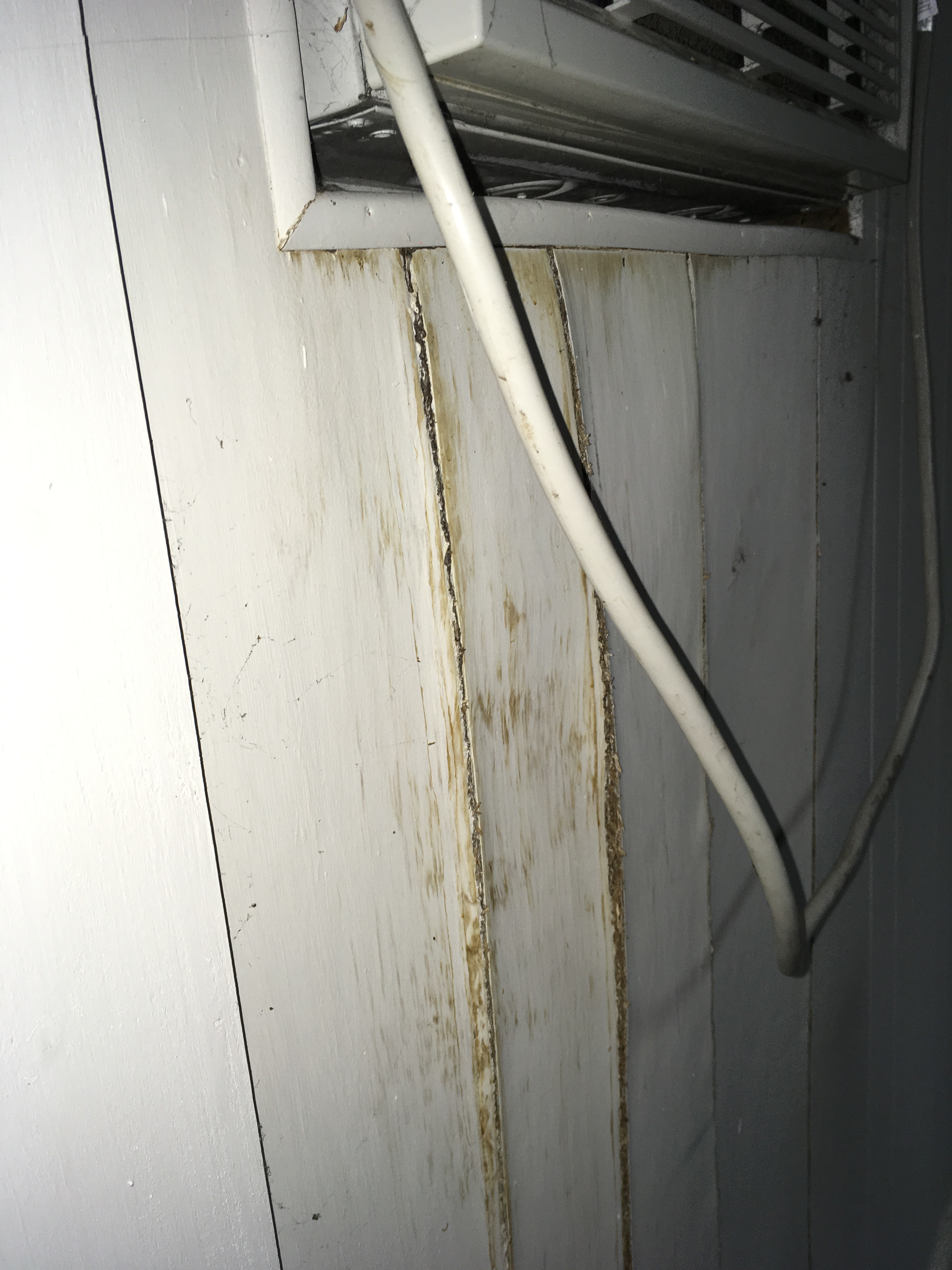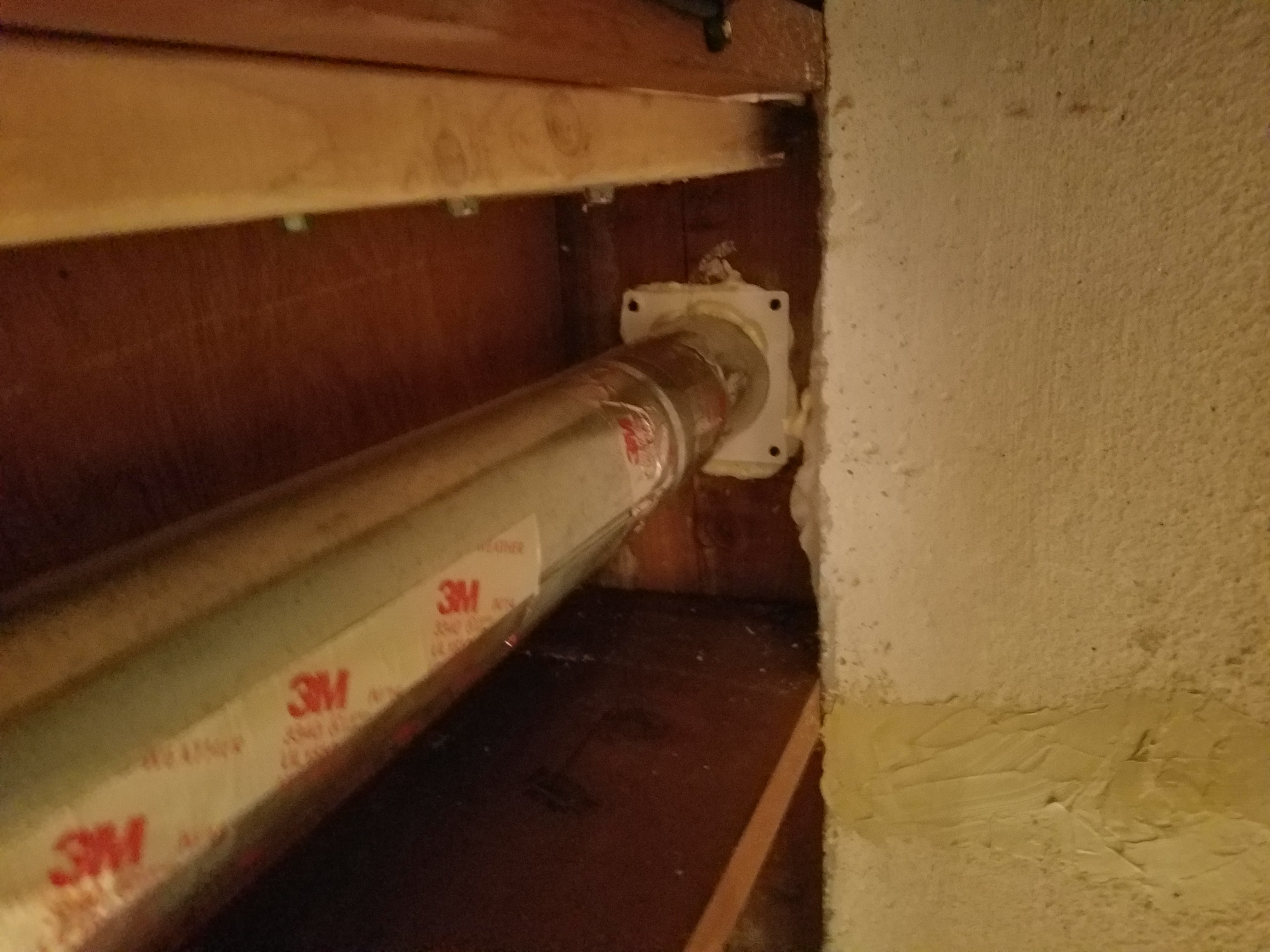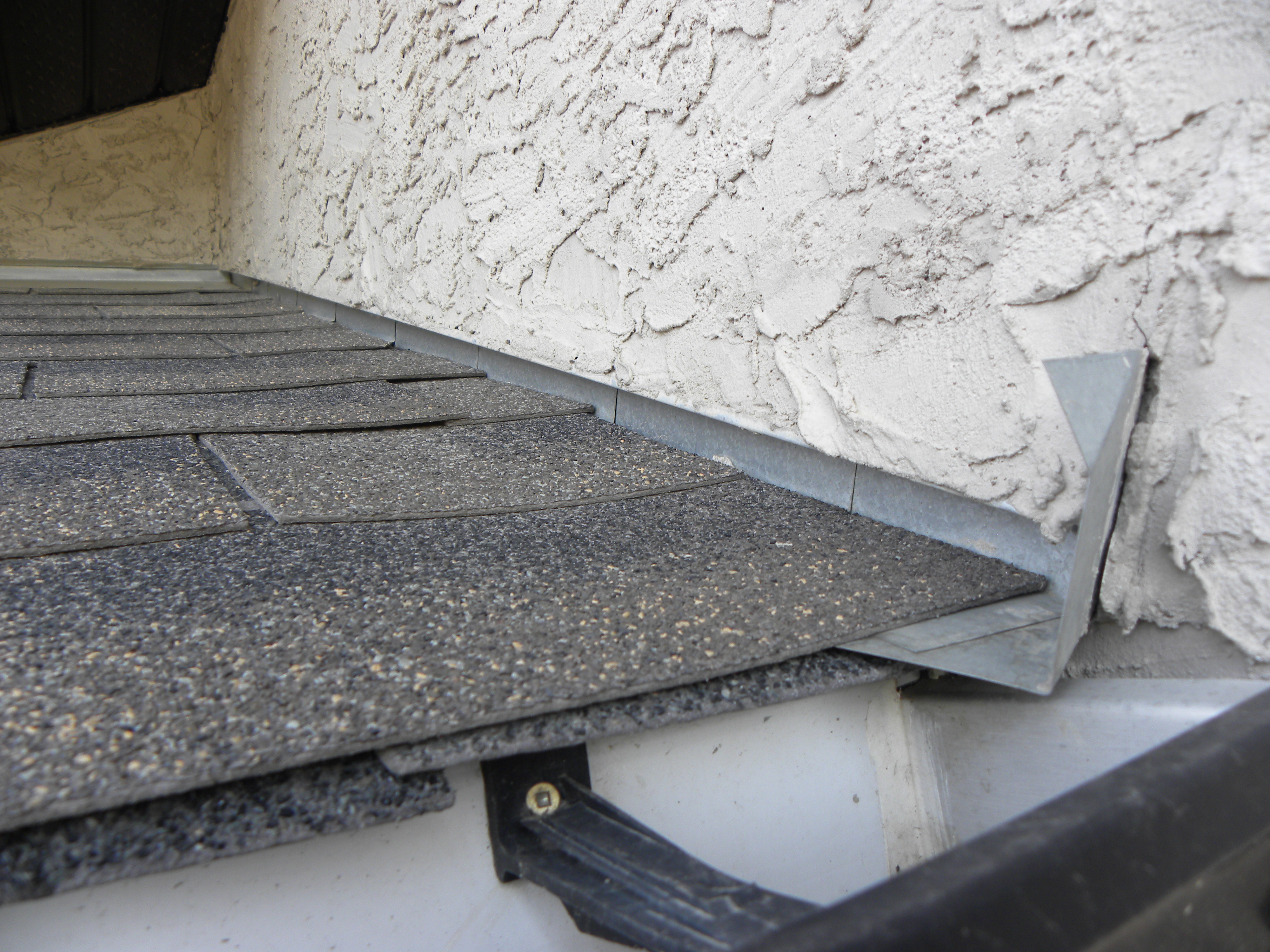In this picture is a new patio door installed with no flashing under the door tread leading to a wood deck. This is allowing water to enter in behind the siding and run down the wall sheathing causing damage .Recommend having this looked at by a certified contractor .
I have learned the the flashing on a attached deck should have flashing at the top side of the ledger board that extends upward behind the wall covering and tipping down past the outer edge of the ledger board , also there should be flashing on the bottom of the ledger that extends out and bends downward over the top piece of wall covering.
In the article, Kickout Flashing by Nick Gromicko and Kenton Shepard, I learned that kickout flashing diverts water away from siding and to a gutter. Problems an inspector can find while doing an inspection are; kickout flashing was never installed, it was not installed properly, or it was modified.
A Ridge vent and soffit vents are a great system to vent moisture and lower the temperature from an attic. Combined with insulation, a ridge vent and soffit vents helps to improve energy efficiency and the durability of singles during long hot summer months.
An exterior spigot was observed to be leaking, which has caused the brick to be continuously wet. This excess amount of water may eventually lead to spalling of the brick, especially if the brick undergoes freeze-thaw cycles. It can be seen that the concrete paving below the wall has been damaged - this may be a sign of things to come.
The attached photo shows, where a water pipe passes through the foundation wall. I noticed the hole in which the pipe passes isn’t completely filled. This can be a potential area for outside moisture to enter the home. I would recommend to a client to have this inspected by a specialist.
I choose to read an article on garage inspections. What stood out most to me is the importance of having adequate connection supplies. Screws that aren’t long enough can fail in supporting wooden beams and trusses. Also, it’s important to have proper graded hangers for sufficient structural support.
I read the article named: “Basic Waterproofing for Basements”. Basements are generally vulnerable to moisture/water infiltration because it is surrounded by soil and is below grade. There are measures to mitigate the risks of water infiltration. To begin, it is important to divert water away from the foundation; this could be done by the construction of swales in the yard area of the house and have the site graded, so that the ground is sloped away from the house. Installing long downspouts (having the outlet at around 4 to 6 feet from the perimeter of the house) will also help divert rainwater from the building.
In the basement, a mixture of epoxy and latex cement can fill small cracks, whereas a mixture of cement and sand should be used to fill bigger cracks. Application of sodium silicate can be a final measure to fill microscopic cracks.
Here is a photo of a 1970’s built home, showing the top of the basement foundation wall as it intersects with the sill plate above it. There are several issues here, in that the sill plate is sitting above the wall at a fair distance, enough to allow a large amount of chinking to be pushed into that air space for an attempt at air intrusion mitigation. In this area, the sill is somehow being suspended above the wall by an unknown means. Normally, the plate would sit directly on top of the wall, with a moisture/termite barrier of foam between the two elements. Most importantly, the sill plate is not of pressure treated wood. If the plate WAS directly on top of the wall, this concrete to wood contact could be of major concern for water diffusion into the wall system. Evidence of plaster remediation is evident here, too. The plaster has separated from the top of the wall and is sticking the inner surface of the sill plate, indicating that the wall itself is raising away from the foundation, OR the foundation is sinking away from the sill plate in this specific area of the wall exterior. Either way, this is an issue for further review and remediation.
Many crawl spaces in older, less expensive homes have dirt floors. As part of a complete vapor control system, these areas of the home should have a vapor diffusion barrier of minimum 6mil poly sheeting covering the entire floor area of the crawlspace, extending a minimum 6" up the side wall of the space, securely attached with adhesive and wood batting affixed horizontally along the walls. This wall attachment method is easiest on poured concrete or block walls, but can be achieved with brick, plaster or rock walls as well. The retarder material sections, if present, should be lapped and sealed by 6" along seams and intersections. The barrier should also be sealed properly around any footers or equipment that may be present in the “field” areas of the crawlspace floor.
How to inspect for moisture intrusion.
Research essay:
The article I chose to research is not just about basement moisture issues but about waterproofing measures once issues have been discovered. The permanent fix of course is to have the exterior of your foundation excavated and then water proofed either with a solid barrier of some kind or a chemical such as Sodium Silicate. That however can be very costly. The more reasonable choice is using that same Sodium silicate on the interior of your basement which combined with the concrete will form moisture impervious crystalline structures in the slab. The most important thing however to be done is the same steps that should be maintained even before an issue occurs which is maintenance of the gutter systems and controlling the water around your home.
Upon inspection of the ceiling in the home office, Moisture stains were observed below where the main AC unit sits in the attic. Using a moisture meter it was determined that the area was dry and it appears that the discoloration had been painted over while it was still damp and bled through. This appears to no longer be an active moisture problem , however further inspection from a licensed plumber and or roofer since the source is undetermined is recommended.
This is a picture of a downspout. The proper sized materials were used and the discharge is directed away from the homes foundation and perimeter. There was correct slope of the ground to the water drain. This downspout was working properly at time of inspection.
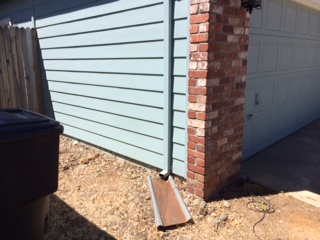
The article I chose to research was on condensation. A few things I learned was that one of the first places it is formed is on metal components. Other areas likely to form condensation are plumbing drains, cold water pipes, water pressure tanks, windows, and plumbing fixtures. Good article!
In the pictures of this window unit air conditioner mounted in a window of a steel siding building, water damage can be seen in the wall and the sill under the portable air conditioner unit. From the exterior photos poor flashing and attempts to seal leaks were noted. Incorrect materials were used and visible damage has been noted. The window unit needs to removed and damage repaired before proper reinstallation of A.C. unit with flashing and condensate drainage considerations.
I chise a picture of the dryer vent exiting tjrough the side wall in the basement. The dryer vent was sealed with expanding foam to prevent moisture from entering through the hole surrounding the vent. The outside was caulked to prevent moisture from entering and possibly causing moisture access between the wall cavity.
I chose how snow can create moisture and possible damage into the attic space. This is possible through the creation of ice dams. When warm air from the floor below the attic escapes into the attic it has potential to melt the bottom od the snow creating leaks through the roof and possible moisture issues. Proper insulation in the attic can prevent this from happening.
I decided to do my essay on kick out flashing because it is an important part of your roof systems flashing. Without the kick out installed rain water penetration to the outside wall at the eaves is inevitable and that water can cause severe damage to the interior walls, possibly cause electrical problems, and the chances for mold growth would be high.
This house is located in Miami fl,and has 25 years of built. wood or wood-like materials present. these materials are subject to moisture damage and weathering to greater extent than other siding materials, as well as infestation by wood-destroying pest and organisms, Recommended further evaluation by licensed professional, for repair or replacement as needed.

